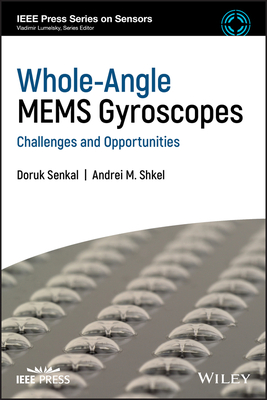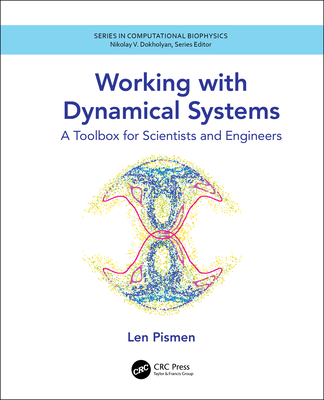Essentials of Mathematica: With Applications to Mathematics and Physics (Hardcover
暫譯: Mathematica 基礎:數學與物理應用
Nino Boccara
- 出版商: Springer
- 出版日期: 2007-04-13
- 售價: $2,470
- 貴賓價: 9.5 折 $2,347
- 語言: 英文
- 頁數: 539
- 裝訂: Hardcover
- ISBN: 0387495134
- ISBN-13: 9780387495132
-
相關分類:
工程數學 Engineering-mathematics
海外代購書籍(需單獨結帳)
買這商品的人也買了...
-
 XML 程式設計藝術 (XML How to Program)
XML 程式設計藝術 (XML How to Program)$950$855 -
 電腦網路 (Computer Networks, 4/e)
電腦網路 (Computer Networks, 4/e)$800$760 -
 C 程式設計藝術 (C How to Program, 4/e)
C 程式設計藝術 (C How to Program, 4/e)$780$702 -
 The Art of Computer Virus Research and Defense (Paperback)
The Art of Computer Virus Research and Defense (Paperback)$2,120$2,014 -
 Head First Servlets & JSP:SCWCD 專業認證指南 (Head First Servlets & JSP)
Head First Servlets & JSP:SCWCD 專業認證指南 (Head First Servlets & JSP)$880$748 -
 Matlab 7 程式設計
Matlab 7 程式設計$680$578 -
 數位影像處理─運用 MATLAB (Digital Image Processing Using MATLAB)
數位影像處理─運用 MATLAB (Digital Image Processing Using MATLAB)$700$665 -
 PHP PEAR 嚴選程式庫
PHP PEAR 嚴選程式庫$580$493 -
 錢進電子商務:購物網站金流指南
錢進電子商務:購物網站金流指南$420$357 -
 作業系統原理 (Silberschatz: Operating System Principles, 7/e)
作業系統原理 (Silberschatz: Operating System Principles, 7/e)$780$741 -
 離散數學及其應用 (Discrete Mathematics and Its Applications, 5/e)
離散數學及其應用 (Discrete Mathematics and Its Applications, 5/e)$750$675 -
 CSS Layout 達人的階梯
CSS Layout 達人的階梯$520$442 -
 Flex 2 程式設計 (Programming Flex 2: The comprehensive guide to creating rich media applications with Adobe Flex)
Flex 2 程式設計 (Programming Flex 2: The comprehensive guide to creating rich media applications with Adobe Flex)$780$616 -
 Visual C# 2005 建構資訊系統實戰經典教本
Visual C# 2005 建構資訊系統實戰經典教本$650$507 -
 精通 MFC 視窗程式設計─Visual Studio 2005 版
精通 MFC 視窗程式設計─Visual Studio 2005 版$750$593 -
 Linux 作業系統之奧義
Linux 作業系統之奧義$480$379 -
 3ds max 建築夜景經典範例
3ds max 建築夜景經典範例$720$569 -
 MicroC/OS-II:即時作業系統核心 (MicroC/OS-II: The Real-Time Kernel, 2/e)
MicroC/OS-II:即時作業系統核心 (MicroC/OS-II: The Real-Time Kernel, 2/e)$650$585 -
 Web Designer 網頁設計關鍵 Idea
Web Designer 網頁設計關鍵 Idea$480$379 -
 ASP.NET 2.0 網站開發實例演練
ASP.NET 2.0 網站開發實例演練$650$514 -
 軟體測試實務講座─來自矽谷的技術經驗與心得分享
軟體測試實務講座─來自矽谷的技術經驗與心得分享$290$226 -
 駭客攻防實戰詳解
駭客攻防實戰詳解$580$458 -
 軟體建構之道 (Code Complete, 2/e)
軟體建構之道 (Code Complete, 2/e)$1,200$1,020 -
 $788The Essential Blender: Guide to 3D Creation with the Open Source Suite Blender
$788The Essential Blender: Guide to 3D Creation with the Open Source Suite Blender -
 3ds Max 材質‧燈光與渲染風雲
3ds Max 材質‧燈光與渲染風雲$580$458
相關主題
商品描述
Description
Essentials of Mathematica: With Applications to Mathematics and Physics, based on the lecture notes of a course taught at the University of Illinois at Chicago to advanced undergraduate and graduate students, teaches how to use Mathematica to solve a wide variety problems in mathematics and physics. The text assumes no previous exposure to Mathematica. It is illustrated with many detailed examples that require the student to construct meticulous, step-by-step, easy-to-read Mathematica programs. It includes many detailed graphics, with instructions to students on how to achieve similar results.
The aim of Essentials of Mathematica is to provide the reader with Mathematica proficiency quickly and efficiently. The first part, in which the reader learns how to use a variety of Mathematica commands, avoids long discussions and overly sophisticated techniques. The second part covers a broad range of applications in physics and applied mathematics, including negative and complex bases, the double pendulum, fractals, the logistic map, the quantum harmonic oscillator, the quantum square potential, the Van der Pol oscillator, the Duffing oscillator, multilane bidirectional pedestrian traffic, public-key encryption, tautochrone curves, Iterated function systems, motion of a bead on a rotating circle, Mersenne and perfect numbers, Lindenmayer systems, skydiving, Lorenz equations, the Foucault's pendulum, and Julia and Mandelbrot sets.
商品描述(中文翻譯)
**描述**
《Mathematica 基礎:應用於數學和物理》是基於在伊利諾伊大學芝加哥分校教授的課程講義,針對高年級本科生和研究生,教導如何使用 Mathematica 解決各種數學和物理問題。該書假設讀者對 Mathematica 沒有先前的接觸。書中包含許多詳細的範例,要求學生構建細緻、逐步且易於閱讀的 Mathematica 程式。它還包括許多詳細的圖形,並提供指導學生如何達成類似結果的說明。
《Mathematica 基礎》的目標是快速且有效地讓讀者掌握 Mathematica 的使用。第一部分中,讀者學習如何使用各種 Mathematica 命令,避免冗長的討論和過於複雜的技術。第二部分涵蓋了物理和應用數學中的廣泛應用,包括負數和複數基底、雙擺、分形、邏輯圖、量子諧振子、量子方形勢能、范德波爾振盪器、達芬振盪器、多車道雙向行人交通、公鑰加密、等時曲線、迭代函數系統、在旋轉圓周上運動的珠子、梅森數和完美數、林登邁爾系統、跳傘、洛倫茲方程、傅科擺,以及朱利亞集和曼德布羅特集。












